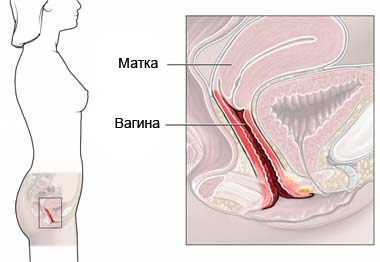Bacterial vaginosis – Vaginal bacteria overgrowth
Description vaginal dysbiosis
Bacterial vaginosis is not dangerous disease of the vagina. Although bacterial vaginosis is usually easily treated, it may be a sign of having a serious illness. It can also lead to the following complications:
- Complications of pregnancy, such as low birth weight and premature delivery;
- High risk of pelvic inflammatory disease, if the bacteria infect the uterus and fallopian tubes.
There is an association between bacterial vaginosis and a higher risk of contracting HIV and other sexually transmitted diseases. If a woman with HIV, and bacterial vaginosis, there is a higher risk of transmitting HIV to her partner-men during unprotected sex.
For the treatment of diseases used antibiotics.

Causes of bacterial vaginosis
Bacterial vaginosis occurs, When the vagina is disturbed the normal balance of bacteria. Usually, They live in the vagina beneficial bacteria (lactobacilliSymbi), as well as harmful bacteria (anaerobes – bacteria, that do not require oxygen).
Sometimes the harmful bacteria multiply greatly and do not provide beneficial bacteria to grow. The reason for this is misunderstood. In some cases excessive proliferation may be associated with sexual activity through transfer of harmful bacteria from a sexual partner.
Risk factors
The following factors increase the likelihood of developing bacterial vaginosis:
- Smoking;
- Using perfume sprays or female;
- Sex without a condom;
- The constant change of sexual partners or multiple partners;
- Use of an intrauterine device (Navy) to prevent pregnancy.
Symptoms of bacterial vaginosis
Some women with bacterial vaginosis have no symptoms. Others experience the following symptoms:
- Abnormal vaginal discharge:
- Color: White or gray;
- Consistency: thin;
- The smell of fish, especially after sex;
- Burning sensation when urinating;
- Itching around the vagina;
- Vaginal irritation;
- Pain during sex.
The presence of these symptoms does not always indicate the presence of bacterial vaginosis, and it can be caused by other disorders. When they occur, seek medical attention.
Diagnosis of bacterial vaginosis
The doctor asks about the symptoms and medical history, and perform a physical exam.
Assays may include:
- The pelvic examination to look for signs of bacterial vaginosis;
- The selection of the sample of fluid from the vagina to test for signs of infection.
Treatment of bacterial vaginosis
Treatment of bacterial vaginosis is important in the presence of symptoms, and during pregnancy, even if no symptoms are not observed. Bacterial vaginosis is easily treated with antibiotics and anti-parasitic drugs, in the form of tablets or vaginal creams, prescribed by a physician.
Prevention of bacterial vaginosis
To reduce the likelihood of developing bacterial vaginosis, you need to take the following steps:
- Abstain from sex or remain monogamous (have only one sexual partner);
- Use a condom during sex;
- Do not use perfumes or feminine sprays;
- See your doctor for regular gynecological examinations;
- To avoid a repeat of bacterial vaginosis need to pass the entire course of treatment, even if symptoms disappear;
- It is necessary to wash the reusable diaphragm, or other device to prevent pregnancy;
- We must try not to wear pantyhose and other clothing, that can trap moisture in the vagina;
- After defecating anus should be cleaned from front to back (from the vagina).
